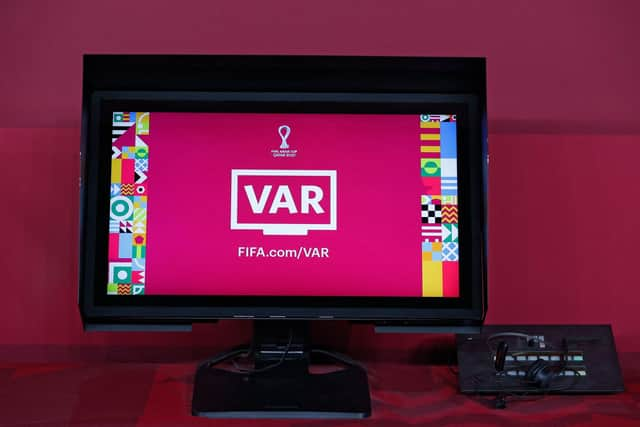Qatar World Cup 2022: Will there be VAR at the tournament? What about semi-automated offsides?
FIFA estimates the technology will help to cut decision-making time on offsides from an average of 70 seconds using current video review methods down to between 20 and 25 seconds. Crucially, FIFA intends to show spectators in the stadium and viewers at home a 3D illustration of the decision after it has been made, most likely at the next break in play after the incident.
The system relies on 12 cameras installed underneath the roof within each stadium, all 100 per cent synchronised with each other. Optical tracking data looks at 29 data points on each player, covering their limbs and extremities, plus the position of the ball, 50 times per second.
Advertisement
Hide AdAdvertisement
Hide AdThe World Cup ball houses a sensor which transmits data to the video operations room 500 times per second. This technology combines to track the limbs of each player and also the precise ‘kick point’ in real time using artificial intelligence.


When an offside is detected by the system, an alert is relayed to the offside video operator, with the lead VAR then manually validating the kick point and the offside line.
The VAR then communicates what he or she can see to the on-field referee. The referee can still use the monitors at the side of the pitch to check issues such as interference with play or other infringements which may render an offside call irrelevant or inaccurate.
A similar system has been used in this season’s Champions League with the Premier League set to adopt the system from next season – meaning it could be used at places like Elland Road, the home of Leeds United.
Advertisement
Hide AdAdvertisement
Hide Ad“Being faster doesn’t mean we will have instantaneous assessment of offside,” said Pierluigi Collina, who chairs FIFA’s referees committee.
“It will take less time than now. I also want to underline, the final decision is with the match official.”
FIFA has also encouraged refs to clamp down on time-wasting, dangerous play and simulation. VAR will be in operation for other incidents after first being introduced for the 2018 tournament in Russia.